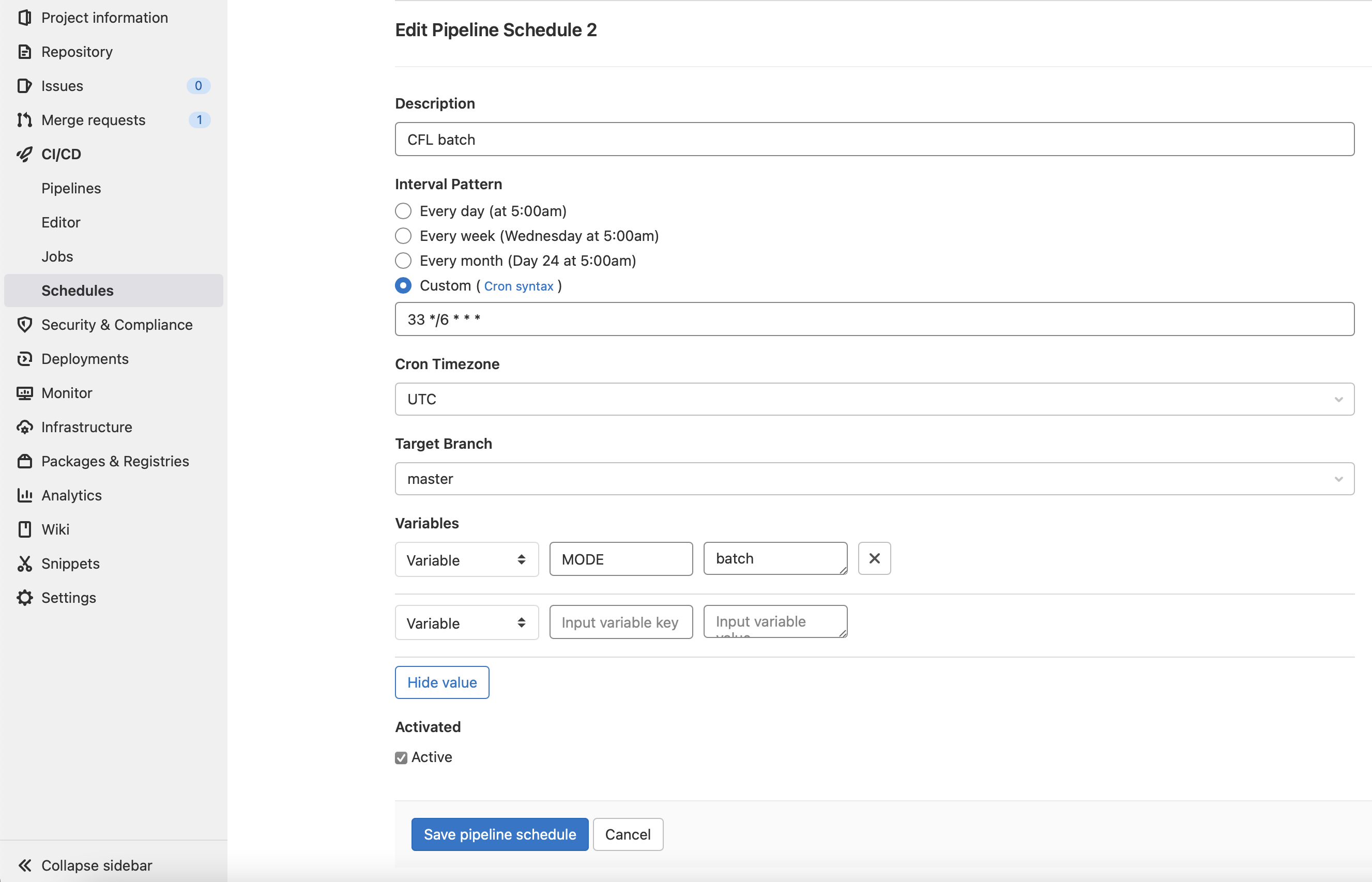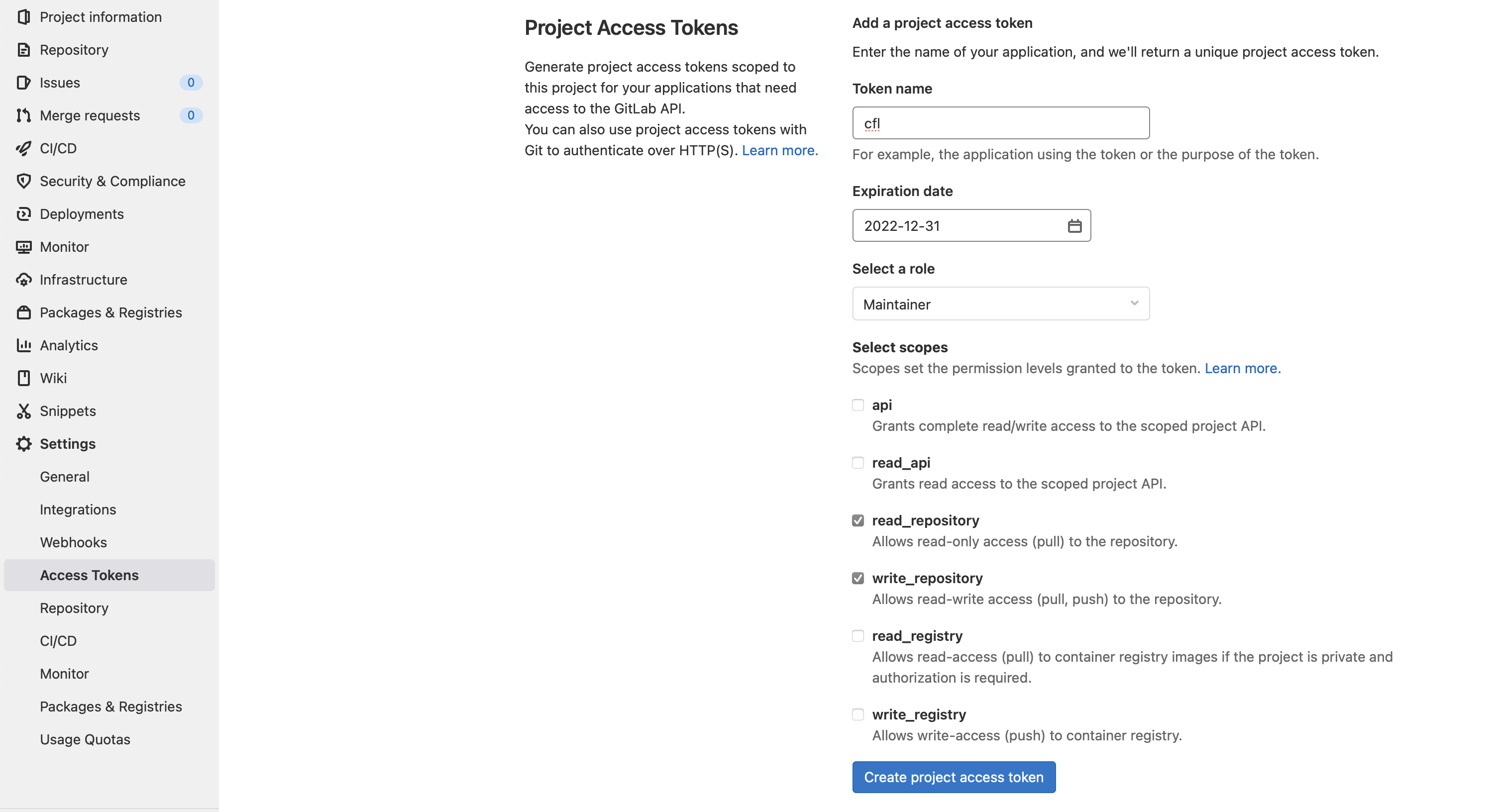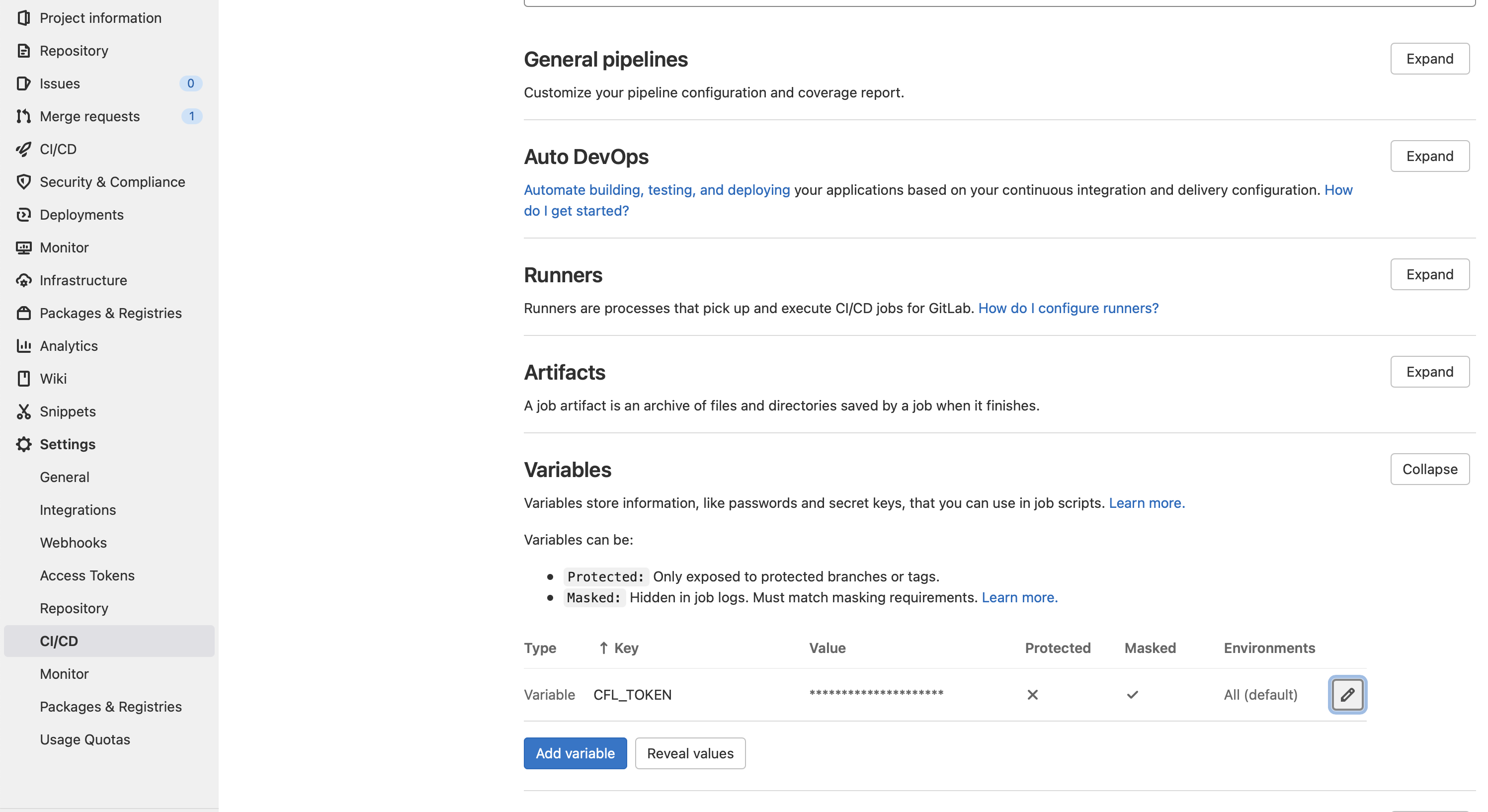GitLab
This page explains how to set up ClusterFuzzLite to run on GitLab. To get the most of this page, you should have already set up your build integration and read the more high-level document on running ClusterFuzzLite.
The following documentation is primarily meant for Gitlab.com with the use of shared runners. It works also for self-managed GitLab instances.
.gitlab-ci.yml
For basic ClusterFuzzLite functionality, all you need is a single job to enable fuzzing on your merge requests.
To enable more features, we recommend having different jobs for:
- continuous builds
- batch fuzzing and corpus pruning
- coverage
MR fuzzing
To add a fuzzing job that fuzzes all merge requests to your repo, add the following default configurations to .gitlab-ci.yml:
For self-managed GitLab instances, this configuration requires at least GitLab 13.3 to be run. With older versions, the parallel keywords does not exist, but you can define SANITIZER as a GitLab CI variable.
variables:
SANITIZER: address
CFL_PLATFORM: gitlab
DOCKER_HOST: "tcp://docker:2375" # may be removed in self-managed GitLab instances
DOCKER_IN_DOCKER: "true" # may be removed in self-managed GitLab instances
clusterfuzzlite:
image:
name: gcr.io/oss-fuzz-base/clusterfuzzlite-run-fuzzers:v1
entrypoint: [""]
services:
- docker:dind # may be removed in self-managed GitLab instances
stage: test
parallel:
matrix:
- SANITIZER: [address, undefined]
rules:
# Default code change.
- if: $CI_PIPELINE_SOURCE == "merge_request_event"
variables:
MODE: "code-change"
before_script:
# Get GitLab's container id.
- export CFL_CONTAINER_ID=`docker ps -q -f "label=com.gitlab.gitlab-runner.job.id=$CI_JOB_ID" -f "label=com.gitlab.gitlab-runner.type=build"`
script:
# Will build and run the fuzzers.
- python3 "/opt/oss-fuzz/infra/cifuzz/cifuzz_combined_entrypoint.py"
artifacts:
# Upload artifacts when a crash makes the job fail.
when: always
paths:
- artifacts/
For self-managed GitLab instances, you may also wish to set tags to select a relevant runner.
Optionally, edit the following variables to customize your settings:
SANITIZERSelect sanitizer(s)LANGUAGEDefine the language of your project.CFL_BRANCHBranch to fuzz, default isCI_DEFAULT_BRANCH.FILESTOREstorage for files: builds, corpus, coverage and crashes.FUZZ_SECONDSChange the amount of time spent fuzzing.PARALLEL_FUZZINGUse all available cores when fuzzing.CFL_ARTIFACTS_DIRTo save your artifacts in a different directory thanartifacts
Batch fuzzing and corpus pruning
Batch fuzzing enables continuous, regular fuzzing on your latest HEAD and allows a corpus of inputs to build up over time, which greatly improves the effectiveness of fuzzing. Batch fuzzing should be run on a schedule.
To enable batch fuzzing, add the following to .gitlab-ci.yml:
clusterfuzzlite-corpus:
image:
name: gcr.io/oss-fuzz-base/clusterfuzzlite-run-fuzzers:v1
entrypoint: [""]
services:
- docker:dind # may be removed in self-managed GitLab instances
stage: test
rules:
- if: $MODE == "prune"
- if: $MODE == "batch"
before_script:
- export CFL_CONTAINER_ID=`docker ps -q -f "label=com.gitlab.gitlab-runner.job.id=$CI_JOB_ID" -f "label=com.gitlab.gitlab-runner.type=build"`
script:
- python3 "/opt/oss-fuzz/infra/cifuzz/cifuzz_combined_entrypoint.py"
artifacts:
when: always
paths:
- artifacts/
You should then define two schedules In one, you should set the variable MODE to batch to run the actual batch fuzzing. In the other, you should set the variable MODE to prune for corpus pruning once a day. These schedules should target the main/default/CFL_BRANCH branch.
Note that you can also use gitlab-ci.yml extends keyword to avoid duplicating most of the common parameters between the different type of jobs.

Continuous builds
The continuous build task causes a build to be triggered and uploaded whenever a new push is done to main/default branches.
Continuous builds are used when a crash is found during MR fuzzing to determine whether the crash was newly introduced. If the crash was not newly introduced, MR fuzzing will not report it. This means that there will be fewer unrelated failures when running code change fuzzing.
To set up continuous builds, add the following to .gitlab-ci.yml:
clusterfuzzlite-build:
image:
name: gcr.io/oss-fuzz-base/clusterfuzzlite-run-fuzzers:v1
entrypoint: [""]
services:
- docker:dind # may be removed in self-managed GitLab instances
stage: test
rules:
# Use $CI_DEFAULT_BRANCH or $CFL_BRANCH.
- if: $CI_COMMIT_BRANCH == $CFL_BRANCH && $CI_PIPELINE_SOURCE == "push"
variables:
MODE: "code-change"
UPLOAD_BUILD: "true"
before_script:
- export CFL_CONTAINER_ID=`docker ps -q -f "label=com.gitlab.gitlab-runner.job.id=$CI_JOB_ID" -f "label=com.gitlab.gitlab-runner.type=build"`
script:
- python3 "/opt/oss-fuzz/infra/cifuzz/cifuzz_combined_entrypoint.py"
artifacts:
when: always
paths:
- artifacts/
Coverage reports
To generate periodic coverage reports, add the following job to .gitlab-ci.yml:
clusterfuzzlite-coverage:
image:
name: gcr.io/oss-fuzz-base/clusterfuzzlite-run-fuzzers:v1
entrypoint: [""]
services:
- docker:dind # may be removed in self-managed GitLab instances
stage: test
variables:
SANITIZER: "coverage"
rules:
- if: $MODE == "coverage"
before_script:
- export CFL_CONTAINER_ID=`cut -c9- < /proc/1/cpuset`
script:
- python3 "/opt/oss-fuzz/infra/cifuzz/cifuzz_combined_entrypoint.py"
artifacts:
when: always
paths:
- artifacts/
You should then define one schedule In it, you should set the variable MODE to coverage. This schedule should target the main/default/CFL_BRANCH branch.
Extra configuration
GitLab runners on self-managed GitLab instances
The previous examples used Docker in docker
From a performance point of view, it is recommended to use a docker gitlab runner running sibling containers: See this doc for more information.
To do so, if you have such a runner ready, you simply need to remove the following lines from the configuration:
variables:
DOCKER_HOST: "tcp://docker:2375" # may be removed in self-managed GitLab instances
DOCKER_IN_DOCKER: "true" # may be removed in self-managed GitLab instances
services:
- docker:dind # may be removed in self-managed GitLab instances
Note that it should be possible to achieve the same functionality using a shell executor, though this is unsupported. In that case, the .gitlab-ci.yml will different. For one you must explicitly call the docker commands on ClusterFuzzLite images.
Gitlab filestore
You can use the variable FILESTORE: gitlab to use GitLab artifacts for storing
- coverage reports
- corpus
- continuous build
- crashes
Crashes get simply added as jobs artifacts.
For continuous builds, you need to use a cache in your jobs: {% raw %}
variables:
CFL_CACHE_DIR: cfl-cache
cache:
key: clusterfuzzlite
paths:
- cfl-cache/
The cache directory needs to be defined as CFL_CACHE_DIR to be used by ClusterFuzzLite. If it is not defined, the default value is cache. You should ensure that the runners share the access to the cache.
For coverage reports and corpus, it is recommended to set up another git repository for storage. You need to create a project access token for this repository, with read_repository and write_repository rights.
You can also use a personal access token if you do not have access to project access token, due to your GitLab license.

Add the token as a CI/CD variable to your GitLab project. You can name this variable as you like, in the following example it is named CFL_TOKEN. This variable should be defined as masked to avoid leaks. It should not be protected if you need it on unprotected branches.

Last, you need to setup these variables in .gitlab-ci.yml :
GIT_STORE_REPO: "https://oauth2:${CFL_TOKEN}@gitlab.hostname/namespace/project-cfl.git"
GIT_STORE_BRANCH: main
GIT_STORE_BRANCH_COVERAGE: coverage
If you do not set another git repository, the GitLab filestore will fall back to the cache.
For coverage reports, you may want to set up GitLab pages In the repository hosting your coverage, you should add a pages job such as:
pages:
script:
- mkdir .public
- cp -r * .public
- mv .public public
artifacts:
paths:
- public
This job will build a static web site with everything which is in the public directory. You may then access the site at https://baseurl/coverage/latest/report/linux/report.html where baseurl is the domain you configured for your GitLab pages.